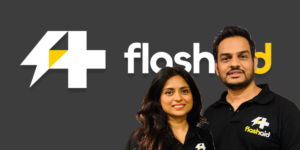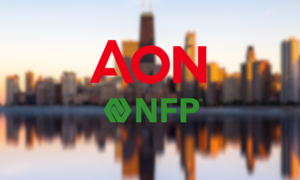While many insurtech companies are set up as intermediaries, a few so-called full-stack insurtechs, such as U.S.-listed Lemonade Inc., take on underwriting risk in addition to marketing, distributing and designing insurance products, and so are responsible for paying claims.
Getsafe, founded by CEO Christian Wiens, started life as a broker in 2015 but has been operating as a managing general agency since 2017. As such, it relies on third-party insurers and reinsurers to assume the underwriting risk of its products. But the company applied to German financial regulator BaFin for a license to underwrite property and casualty insurance in the country in February 2020 that, once received, will allow the company to assume risks itself.
Treiber said in an interview that the company was “just about to finalize that process” of obtaining the license “so we expect by this summer to have become a fully licensed carrier.” He added that the change will give Getsafe more scope to automate and improve the claims process, more freedom to set underwriting criteria and pricing “and also a higher margin potential in the medium term.”
Taking the risk
Getsafe announced Dec. 8, 2020, that it had raised $30 million in series B funding, taking the total raised from investors to $53 million. This latest round was led by Swiss Re’s iptiQ business unit, which provides companies with the technology and capacity to sell insurance products. Treiber said the company is “about to launch a new fundraising process,” targeting €50 million to €75 million “over the next couple of months.” He added that part of this new raise will be allocated to Getsafe’s new risk carrier to fund its initial operations.
The company will start by writing two products — contents and liability — on its own balance sheet in Germany, which Treiber said would probably be widened to a third product in Germany before expanding to further geographies. The company will operate as a hybrid, assuming some risks itself and continuing to pass others to third parties. Getsafe’s ambition for the medium term is to have “most risks on our book,” Treiber said, with the exception of more capital intensive businesses such as motor insurance, which Getsafe launched in Germany in November 2020 and is underwritten by iptiQ. Noting that iptiQ has an international platform capable of rolling the product out to more countries, Treiber said motor “is something where we probably won’t use our own license for the foreseeable future.” Likewise, the company does not currently have any plans to apply for life or health insurance licenses, he said.
Other full-stack digital insurers have made extensive use of reinsurance to reduce their exposures when writing on their own balance sheet. Lemonade, for example, cedes 75% of its premium to reinsurers on a proportional basis, and also uses nonproportional reinsurance in a bid to limit its payout per claim to $125,000. Treiber said Getsafe “will likely use a reinsurance ratio in the 70% area.” He noted that while this arrangement would mean sacrificing some profit margin, “it is more important to be dynamic and not to have too much capital bound with the license for the time being.”
Getsafe is planning to break even in 2024 for the business it underwrites itself, Treiber said. Group-wide, he added, breaking even depends on when the company opts to grow less aggressively. The company would be loss-making for the next three years, he said, and it would then be in a position to decide whether to push for breakeven or continue growing aggressively.
European ambitions
As well as looking to underwrite more risk on its own balance sheet, Getsafe is looking to expand geographically.
“Our ambition is clearly to become a player covering all of the major European insurance markets,” Treiber said. The company launched in the U.K. in 2020, offering contents cover, and has established a presence on U.K. price comparison sites Confused, GoCompare and Quotezone. Treiber said the company has around 170,000 customers across Europe, with the “vast majority” in Germany.
While the order has yet to be decided, Treiber said the next markets on the roadmap, “for next year mostly” will be Italy, Spain and France. “We plan to enter these markets primarily through a renters’ contents insurance product and then complement it later with homeowners and also car insurance,” Treiber said.
While Getsafe has similarities to Lemonade in its product offering and approach, and Lemonade is now in three European countries, including Getsafe’s home market of Germany, Treiber said: “To be honest we don’t feel the competitive pressure from their end yet.” He said Getsafe’s competitors are “the incumbent direct insurers.”
Source: S&P Globla
Share this article:








